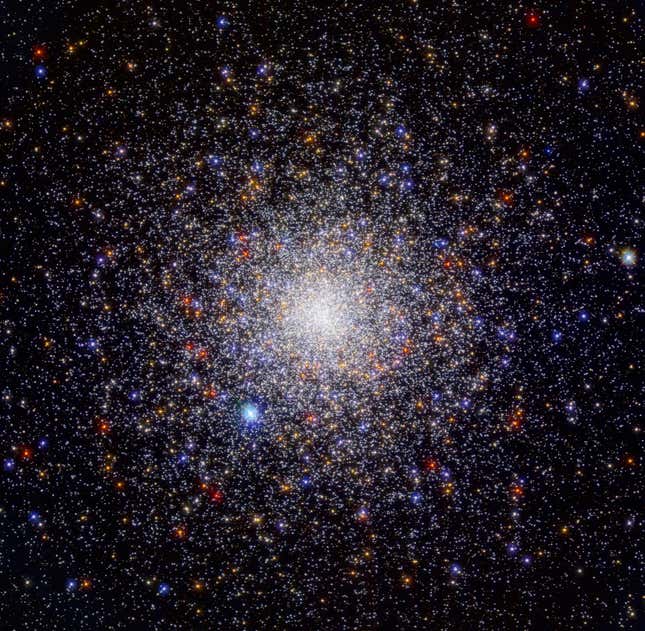A group of scientists discovered a compact object 40,000 light-years from Earth that’s both a really huge neutron star or an itsy-bitsy black gap, however they’re unsure which.
The so-called mass hole object has a mass between 2.09 and a couple of.71 instances that of our Solar. For a neutron star—the collapsed, superdense core of a star—that will be large, maybe even the biggest but recognized. However for a black hole—an much more compact object, so dense that not even gentle can escape it—it will be among the many smallest of its sort; black holes could be millions if not billions of times the mass of our Sun. The group’s analysis exploring the neither-here-nor-there object is published at the moment in Science.
“If a neutron star, it’s most likely the heaviest one recognized to this point, with classes for the unsure physics of extraordinarily dense nuclear matter,” mentioned Maya Fishback, an astrophysicist on the College of Toronto who was not affiliated with the current paper, in an related Perspective article. “If a black gap, it could be the lightest recognized, which might have an effect on the understanding of supernova explosions or dynamical interactions resembling neutron star mergers inside globular clusters.”
Each neutron stars and black holes are venues for a few of the universe’s most extreme physics. From their inner workings to the spacetime-warping collisions between them, higher understanding their genesis and interactions will assist astrophysicists decipher every part from quantum mechanics to the evolution of galaxies. Their baffling natures possible maintain solutions to a few of the most elementary questions concerning the universe.
The thing sits in Caldwell 73 (NGC 1851), a globular cluster which will have shaped from two clusters that coalesced in a dwarf galaxy. It’s half of a binary system, the opposite half being a pulsar, a quickly rotating neutron star whose flashes of sunshine astrophysicists can use to measure issues like the rippling of spacetime itself. The 2 objects are 4.97 million miles (8 million kilometers) aside.

The group noticed the binary with the MeerKAT radio telescope in South Africa. They calculated the entire binary mass—3.887 photo voltaic plenty, give or take .004, in addition to the mass of the companion object, the upper estimate of which is 2.71 photo voltaic plenty. (In 2019, a unique group described a hefty neutron star with a mass 2.14 instances that of the Solar; the newly described object blows that one out of the cosmic water.)
“Along with the bizarre companion mass of pulsar PSR J0514−4002E, the binary system’s whole mass of three.887 photo voltaic plenty is outstanding,” Fishback added. “It’s heavier than any recognized binary neutron star system.”
The analysis group believes the distinctive object—once more, both one of many heaviest neutron stars or presumably the lightest-known black gap—shaped in a merger between two neutron stars, no matter its true nature.
Although the group couldn’t finally decide this uncommon object’s identification, follow-up observations of comparable compact objects in the identical mass vary might provide some readability concerning the situations through which neutron stars and black holes type and develop.
Trending Merchandise















